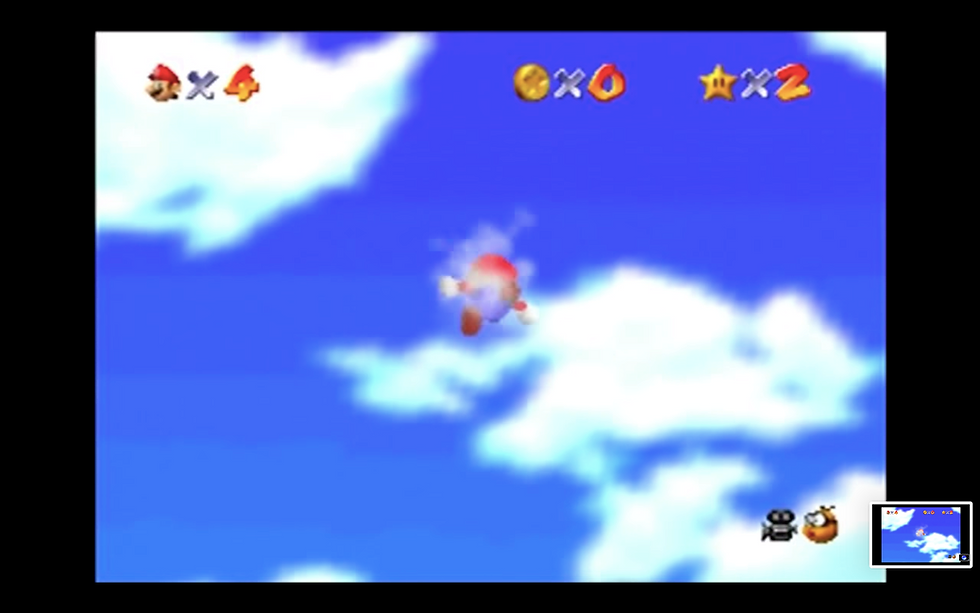Game Review: Kirby's Dreamland 3
- Jaida Kenana
- Oct 17, 2019
- 4 min read
Kirby’s Dream Land 3 is a seemingly linear platformer, where you play as the main protagonist, Kirby, and use various allies to pass a set of stages within each of the five worlds of the game. The plot is not so much of the focus of this gameplay experience, but rather, the gameplay mechanics itself is the primary focus of the game. With that being said, in order to progress through the game, you must jump, fly, run, use spit attacks, and suck up enemies throughout the various platforms. At first glance, Kirby’s Dream Land 3 seems like a typical platformer game where the plot is linear, and the course of actions are restricted to a few, but rather engaging, actions. Unlike other platformer games of its time such as Super Mario World or Yoshi’s Island, Kirby’s Dream Land 3 uses the gameplay relationships of various companions to allow the player a sense of spatial exploration not seen in many early linearly styled platformers. In doing so, Kirby Dreamland 3 sets a precedent for modern forms of exploration that we do not often seen until the rise of modern, open world, RPG games such as Fallout 3 and Skyrim.
In Kirby’s Dream Land 3, Kirby has seven different companions that can be interacted with. With its various companions, Kirby’s Dream Land 3 offers a plethora of gameplay experiences within seemingly linear stages, thus changing this game from a linear gameplay experience to a spatially explorative experience. It might be interesting to point out, that Kirby has more companions than worlds to explore. After Kirby’s premise is introduced in World 1, Stage 1, the game quickly introduces the first two companions Kirby can interact with in World 1, Stage 2. In this particular stage, the player can choose to play alongside Gooey (Kirby’s female counterpart), Pitch (the green bird), or solo. Depending on the choice of companion the player chooses, the way in which the player interacts with enemies and various spaces change. For example, when sucking up a rock playing solely as Kirby, Kirby turns into a rock when engaging its power up. This action can be used to ground smash opponents, or to avoid damage when turned into a stationary rock. When interacting with Gooey, however, Kirby’s rock power up becomes more dynamic. With Gooey, Kirby’s rock power up takes the form of a spinning lasso action that can be done while flying, on the move, or standing still. This changes the range in which the player engages with enemies and the timing in which the player must act upon in different scenarios. Lastly, when Kirby engages with Pitch, Kirby’s rock power takes the form of a fluid dive into the object the player is trying to damage.
In World 1, Stage 2, one can see the various companions Kirby can engage with, which ultimately change the gameplay experience one can have in the game. Each companion has a different form of mechanics that cause you to interact with the spatiality of these seemingly linear platforms. For this reason, Kirby Dreamland 3, is a more spatially explorative game than a linear platform game that it may present itself as. In his paper, “Game Design as Narrative Architecture”, Henry Jenkins states that “Spatial stories are not badly constructed stories; rather, they are stories… privileging spatial exploration over plot development” (Jenkins, 7). Although Kirby Dream Land 3 is a game not entirely within the scope of Jenkin’s paper, the interactivity of Kirby’s various companions shows that this early platformer is indeed prioritizing spatial exploration over a linear plot line or linear gameplay. Since the companion the player chooses changes the mechanics and relationships of the game rather dramatically, it causes the player to explore each stage with the various companions and power ups, rather than finding the quickest or most thrilling way to simply pass the stage. Aligning with Jenkins’ language, Kirby Dreamland 3 is a form of spatial storytelling. However, to add to the spatiality argument of Jenkins, rather than just being a game of spatial storytelling, Kirby Dreamland 3 is a game of spatial and mechanical story telling. While spatial storytelling consists of exploration of a space to further a narrative, Kirby Dreamland 3 uses spatial exploration as a way to further the mechanical gameplay experience itself.
Through the use of spatial exploration in the game mechanics of Kirby Dreamland 3, this game creates an experience very different from many platformers of its time. While games such as Super Mario World implements changing platform mechanics to propel the engagement of its game, Kirby Dreamland 3 does something different. Rather, instead of prioritizing the changing platforms of the game, Kirby Dreamland 3 opens up its gameplay experience by allowing the player to explore changing mechanics through its relationships with different companions. This form of spatial exploration seems rather ahead of its time because most platformer games follow Mario’s mechanics of changing platform environments rather than exploration of space through different characters. In present day gaming culture, open world, RPG games are highly regarded because of its freedom of spatial exploration and interactions with characters in certain environments. Perhaps something can be said about Kirby’s Dreamland 3 in that it sets a precedent for modern forms of exploration that we do not often seen until the rise of open world, RPG games such as Fallout 3 and Skyrim.
Works Sited
1. Kriby’s Dreamland 3, Nintendo, 1997
2. Jenkins, Henry. Game Design as Narrative Architecture. 21 Sept. 2005, https://pdfs.semanticscholar.org/f82f/061e7a44530d1dee281b96d9b1640485aa74.pdf




Comments